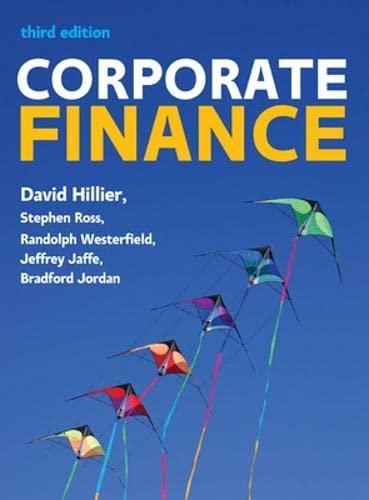Question
The Conference Board Economic Forecast for the US Economy August 02, 2023 | Report The Conference Board forecasts that the growth seen in many parts
The Conference Board Economic Forecast for the US Economy
August 02, 2023 | Report
The Conference Board forecasts that the growth seen in many parts of the economy will gradually buckle under mounting headwinds later this year, leading to a very short and shallow recession. This outlook is associated with numerous factors, including, elevated inflation, high interest rates, dissipating pandemic savings, lower government spending, and the resumption of mandatory student loan repayments. We forecast that real GDP growth will slow to 1.9 percent in 2023, and then fall to 0.5 percent in 2024.
Following a period of renewed strength in early 2023, consumer spending growth has slowed in recent months. However, despite numerous headwinds associated with inflation and interest rates, US consumers have not closed their wallets altogether. This trend cannot hold, in our view. Compensation growth is decelerating, pandemic savings are dwindling, and revolving credit utilization is rising. Additionally, new student loan repayment requirements will begin to impact younger consumers later this year. Thus, we forecast that overall consumer spending will grow in Q3 2023, but anticipate a contraction in Q4 2023 and Q1 2024. As inflation and interest rates abate in 2024, we expect consumption to begin to expand once more.
Meanwhile, following weak growth in Q1 2023, business investment bounced back in Q2 2023 despite interest rate increases. This was largely due to a surge in business spending on equipment (especially computing and transportation equipment) and elevated investment in structures (especially in manufacturing). However, we expect this trend to reverse later this year as US consumption softens and interest rates continue to rise (we believe the Fed will raise rates by 25 basis points once more this year, likely in Q4 2023). Additionally, commercial and industrial lending by banks continues to decline in the wake of the US banking crisis. Residential investment, which is highly sensitive to Fed policy, has already contracted significantly as interest rates have climbed. We don't expect a recovery in this sector until rates begin to fall next year.
Government spending represented one of the few positive growth drivers for 2023 as federal non-defense spending benefited from outlays associated with infrastructure investment legislation passed in 2021 and 2022. However, reductions in discretionary outlays ($1.5 Trillion over 10 years) detailed in the Fiscal Responsibility Act, which averted the debt ceiling crisis, will limit overall government spending and act as a drag on growth later this year and early next.
On inflation, we expect to see progress over the coming quarters, but the path will probably be bumpy. That large decrease in the reported year-over-year PCE deflator in Q2 2023 was welcome but was due in-part to base effects. Starting in Q3 2023, rents, which are a significant contributor to faster inflation, are expected to cool. This will drive inflation even lower. However, this does not mean the fight to tame inflation is over - far from it. We expect year-over-year inflation readings to remain at about 3 percent at 2023 yearend and that the Fed's 2 percent target will not be achieved until the end of 2024.
Labor market tightness will moderate somewhat over the coming quarters but will remain acute relative to previous economic downturns, reflecting persistent labor shortages in some industries and labor hoarding in others. This should prevent overall economic growth from slipping too deeply into contractionary territory and facilitate a rebound next year.
Several factors impacted our revised forecast this month. Q2 2023 real GDP growth came in much stronger than expected (although large revisions to the advance estimate are likely) and monthly Personal Consumption Expenditure growth reaccelerated in June. Additionally, our consumer confidence index saw meaningful improvement in both June and July. Presently, we acknowledge that the likelihood of a 'soft landing' for the economy is rising, but we continue to believe that a very short and shallow recession is the more likely scenario.
Looking into 2024, we expect the volatility that dominated the US economy over the pandemic period to diminish. In the second half of 2024, we forecast that overall growth will return to more stable pre-pandemic rates, inflation will drift closer to 2 percent, and the Fed will lower rates to near 4 percent. However, due to an aging labor force we expect tightness in the labor market to remain an ongoing challenge for the foreseeable future.
summarize key points of the article using macroeconomic terminology,
Step by Step Solution
There are 3 Steps involved in it
Step: 1
The Conference Board Economic Forecast for the US Economy predicts a gradual slowdown in economic gr...
Get Instant Access to Expert-Tailored Solutions
See step-by-step solutions with expert insights and AI powered tools for academic success
Step: 2

Step: 3

Ace Your Homework with AI
Get the answers you need in no time with our AI-driven, step-by-step assistance
Get Started


